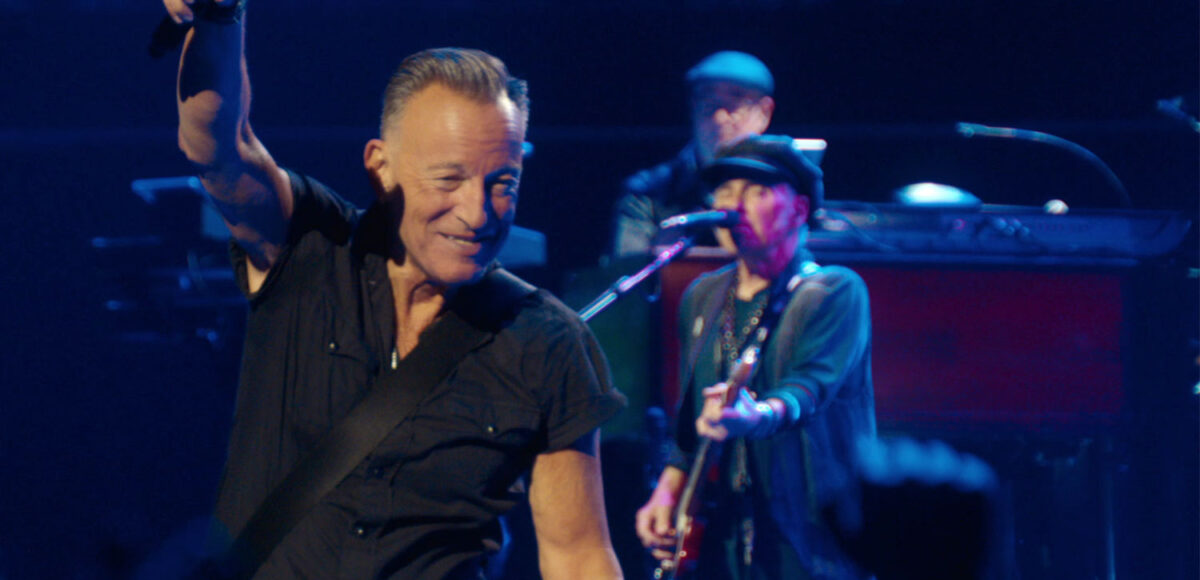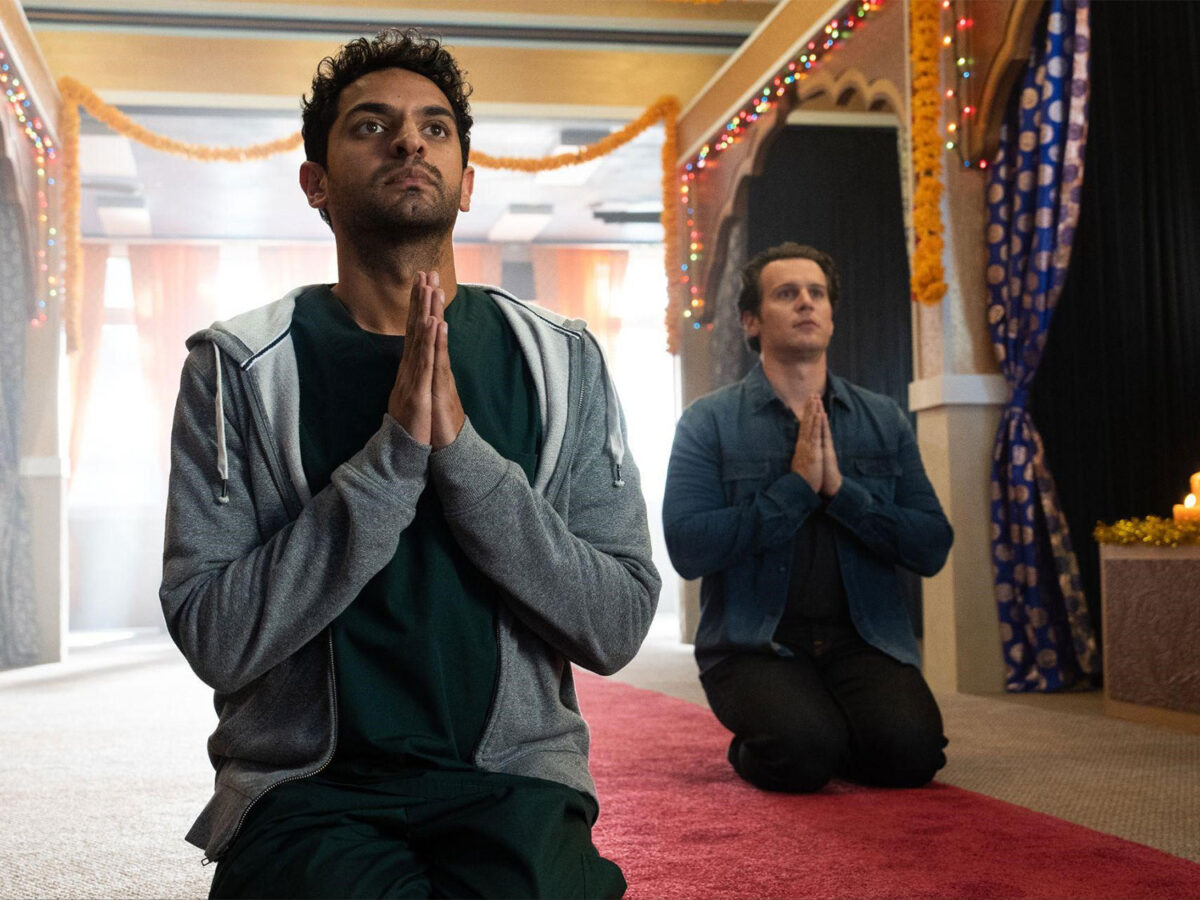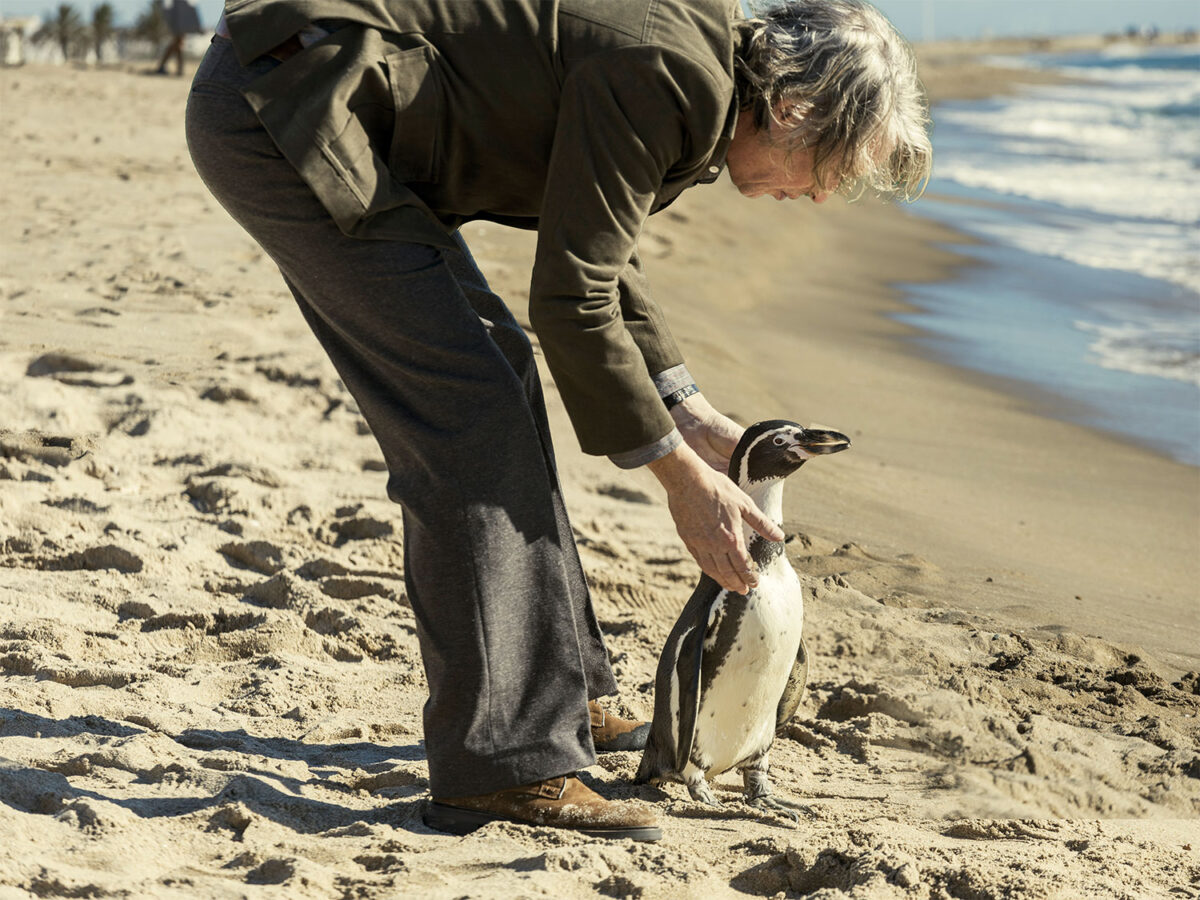He’s thickened a bit in the middle and he’s traded those skinny Levis for dad jeans but he hasn’t lost a beat and that voice hasn’t lost a note. The hair is a bit thinner and grayer, but the unwrinkled face and still strong biceps speak more to clean living than surgical enhancement. He’s still the Boss and we’re lucky to have him. And have him we do for a ringside seat to the band’s first tour in over six years in the new Hulu documentary “Road Diary.”
In one form or another, the E Street Band has been accompanying Springsteen for almost 50 years. The configuration has changed, sometimes larger, sometimes smaller, a different drummer here, a new guitarist there, backup singers, horns, no horns, a violin, but it always works and many of the members of the ensemble have been there almost since the beginning. This is the group he tours with, much more than just a backing ensemble. Sometimes when Springsteen embarked on solo work, he disbanded the band, but it never lasted long. This is a family and they celebrate their victories together and mourn their losses, particularly the loss of keyboardist Danny Federici to cancer and saxophonist Clarence Clemons from a stroke in 2011. Clemons’ nephew Jake took over his position and his uncle’s sax in 2012.
He originally thought they’d tour in 2019 and then 2021, but life and the pandemic messed with his original plans. But it’s 2024, and they’ve decided to bring down the house. Unlike other rock ‘n’ roll groups over the decades, there have been no meltdowns, no drug overdoses, no headline grabbing sex scandals (not counting Springsteen’s affair with band member Patti Scialfa before his divorce was final; not a passing fling, they’ve been married over 30 years). Steve Van Zandt, an on and off again member of the band since 1976, although he played with Springsteen in groups before fame overtook them, is quoted as saying that Bruce Springsteen is the only person (not performer but person) he knows who has never (underline never) done drugs. Van Zandt, who has come and gone many times for his own career, both in acting and music, is now the Musical Director of the band and shares his vast knowledge of the Boss and the Band in many of the onscreen interviews. For this tour the band is bigger than ever, but still a close-knit family. The concert will end, as they always end, Bruce, on stage alone, performing an acoustic solo.
“Road Diary” is not a tell-all or a bio in the sense of the recent documentaries profiling Linda Ronstadt or Gordon Lightfoot. “Road Diary” is just that—an up close and personal look at the preparation, rehearsal and ensuing concerts that Springsteen took on the road. Interviews with band members and associates give you a bird’s eye view of what it takes to get the show on the road. No gossip, no tsouris, just roll up your sleeves and get back into the groove.
Springsteen is incredibly disciplined. Unbelievably charismatic, he’s still true to his blue-collar origins with appeal that crosses all age groups, ethnicities and economic demographics. His shows are personal. He knows exactly who he is. He’s the maestro.
Preparing for that first show of the new tour, Springsteen intensely circles the stage. The tempos are a bit too slow. What he wants is rock; 1976 rock. This is a bigger band and Van Zandt must pull them together, incorporating new members into the group. Think Big Band but playing rock ‘n’ roll. Springsteen stays only for a short rehearsal that first day, warming up his voice and pulling the arrangements. Choosing the set list, he explains that he has a specific narrative in mind. There will be no “greatest hits.” The songs he’s selected will tell the story he wants to tell. Leaving the run-through early, he lets them know he has full confidence in them. They know what’s expected. Van Zandt will keep the rehearsal going and get the “wow” factor Bruce is looking for.
Key musicians, all of whom have been with the band off and on for 40 or so years, reminisce about past tours. Only the colors of their neatly pressed shirts or drummer Max Weinberg’s sports coats have changed over time. Patti is still by his side but won’t make all the tour dates; she’s in treatment for multiple myeloma. To a man (and woman) they reiterate the family theme. It doesn’t work as an autocracy, regardless of Bruce’s preeminence. They are well aware that the fans are coming to see Bruce, but it is the band that Bruce relies on and listens to.
This tour will also take them to Europe, first stop Madrid. A great deal of time, actually too much, is spent asking various Italian, Scandinavian and Spanish fans “what Bruce means to me.” I suppose that is to emphasize the universality of his appeal, but personally I’d rather see more Bruce and the Band and less fan segments.
Bruce Springsteen is truly the last man standing. He still has the passions he followed as a kid and clings to the friendships he’s made over the years, but especially those of the long-serving members of the E Street Band. Federici and Clemons were there at the very beginning in 1972, as was Garry Tallent who is still the bassist. The year 1974 saw the inclusion of Roy Bittan on keyboards and Max Weinberg on drums. Van Zandt officially joined in 1975, with other musicians in the 1980s. Even when members left to do their own thing, they were welcomed back to the family. Even when Springsteen broke up the band for his solo career it was more a formal separation than a divorce because he probably never intended to remain a solo forever.
He lives by this quote from Jim Morrison. “O great creator of being, grant us one more hour to perform our art and perfect our lives.”
He’s found a way for universal appeal in the message, not just the music. Amid screaming fans, a journalist foolishly asks him if he’s ready to retire. Laughing, he points to the adulation of the fans and says simply, “Give that up?”
Premiering Oct. 25 on Hulu.
Neely Swanson spent most of her professional career in the television industry, almost all of it working for David E. Kelley. In her last full-time position as Executive Vice President of Development, she reviewed writer submissions and targeted content for adaptation. As she has often said, she did book reports for a living. For several years she was a freelance writer for “Written By,” the magazine of the WGA West, and was adjunct faculty at USC in the writing division of the School of Cinematic Arts. Neely has been writing film and television reviews for the “Easy Reader” for more than 10 years. Her past reviews can be read on Rotten Tomatoes where she is a tomato-approved critic.







